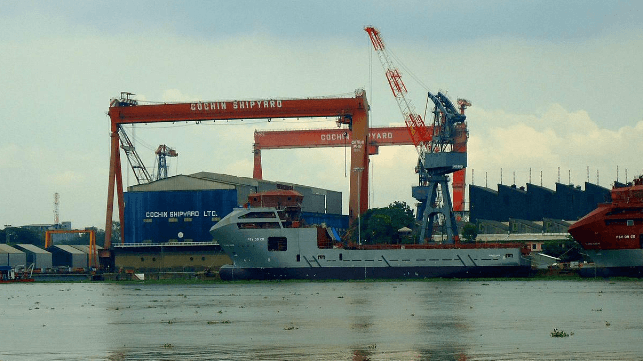India Rolls Out Subsidies and Preferential Financing for its Shipyards

India is set to unveil a new policy aimed at incentivizing domestic shipbuilding. The ports, shipping and waterways ministry (MoPSW) is finalizing a cabinet note on incentives to promote domestic shipyards, reported the Indian business newspaper Mint. The proposed incentives are primarily focused on encouraging the development of fuel-efficient and technologically advanced vessels.
The new incentive program is the second phase of the existing Shipbuilding Financial Assistance Policy (SBFAP), which was adopted in 2016 and slated to expire in 2026. In the first phase of SBFAP, 313 vessel orders encompassing both domestic and export orders have been procured by 39 shipyards. So far, 135 vessels have been delivered.
During the second phase, the government reportedly wants to allocate $2.1 billion for the program. This will help provide a 25 percent subsidy for specialized vessels, rising to 30 percent for green and highly specialized vessels.
Another significant proposal is issuing credit notes worth 40 percent of a ship’s scrap value. After a demolition sale, the credit note could be reimbursed against the cost of constructing a new vessel at an Indian shipyard. Through this proposal, the government is hoping to encourage fleet renewal of Indian vessels. Around 44 percent of India’s merchant shipping fleet is above 20 years of age, data from MoPSW shows.
In addition, the government is also considering to introduce a purchase preference policy beginning in fiscal year 2031. This means vessels seeking new registration for coastal cargo transport in India would need to be built at a domestic shipyard.
India is targeting the shipbuilding industry as one of the critical pillars in achieving its Atmanirbhar Bharat vision (self-reliant India). The goal is to increase the percentage share of India-built ships in India’s fleet to seven percent by 2030 and 69 percent by 2047. The subsidy programs are key in making Indian yards as competitive as those of China and South Korea.
India is also in the process of giving the shipping industry infrastructure status for the first time. Currently, only shipbuilding and shipyards have infrastructure status, but the broader coverage will help reduce project costs for the shipping sector. Infrastructure status means a company can float infrastructure bonds, hence attracting investments from commercial banks and other kinds of concessions.
Top image: Ranjithsiji / CC BY SA 3.0
